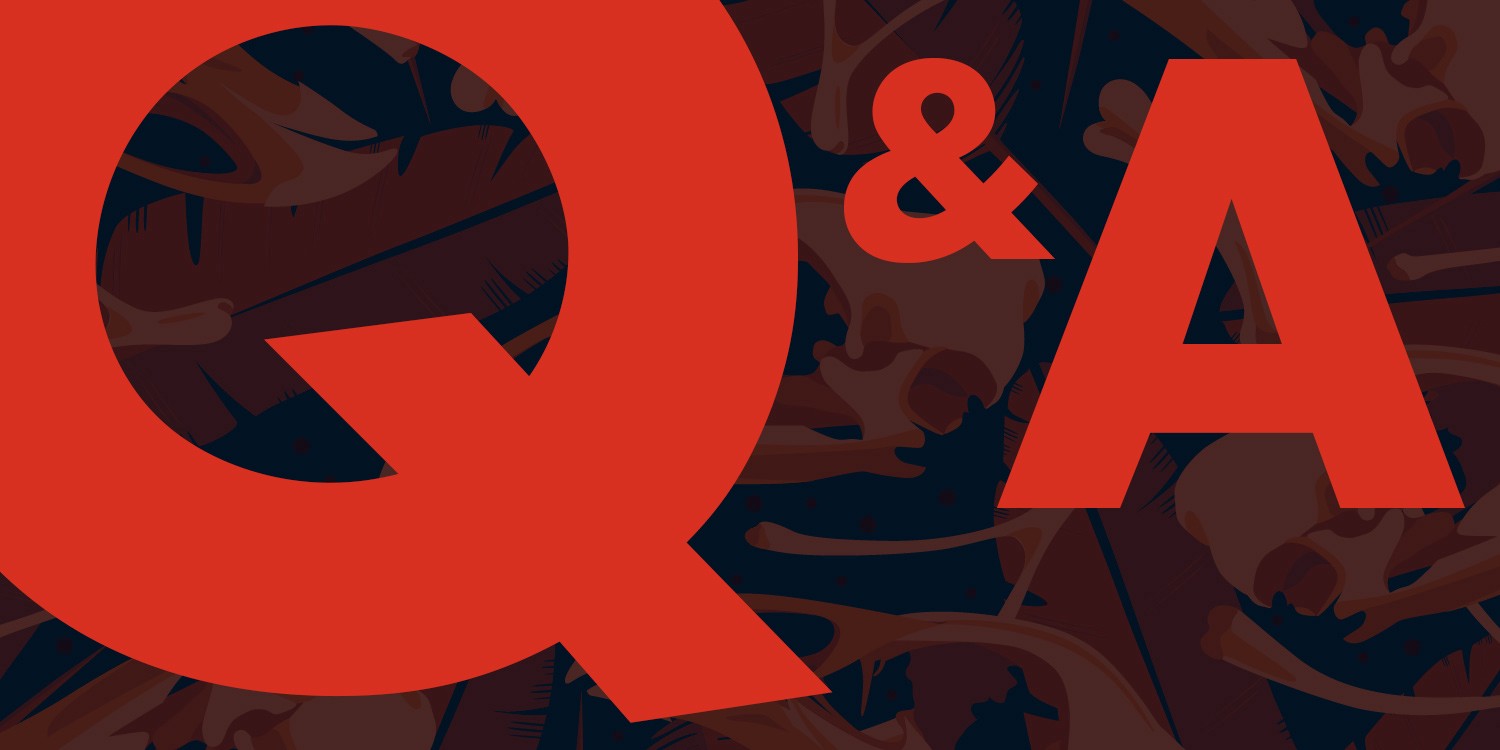

Read the previous installment: “Airborne: We’re five mutations from a major pandemic“

We asked for your questions about pandemics and avian flu, and Simon Parkin, the lead author of Fowl Plague, answered them. If you haven’t been following the series, start at the beginning.

Q The researchers you interviewed said we’re not prepared for an influenza pandemic. How can individuals help to change that?
A The measures that any one individual can take to prepare for an influenza pandemic are far less meaningful than those that governments and nations can take. A lot of good work has been accomplished in the past decade to design and improve the systems that are in place to enable countries to work together to halt a global influenza pandemic. In particular, the Pandemic Influenza Preparedness (PIP) plan carefully outlines both precautions and reactive measures the countries should take when the next bird flu bomb hits. Stockpiling vaccines means that, in wealthy countries, at least, populations have a good chance of being able to effectively react in the early days of a pandemic.
That said, plenty of experts who spend their time studying pandemics believe that much, much more can be done at an international level. In terms of individual measures, it slightly depends on where you live. Bird flu outbreaks in China and the U.S. have typically started through the handling of live poultry at bird markets. The CDC has found that outbreaks in Egypt occur when people bring chickens into their homes during cold weather. Elsewhere, vulnerable individuals should always have a flu vaccination at the appropriate time of the year–outside of the grip of a pandemic, seasonal influenza currently kills many, many times more people than bird flu. And, no matter where you live, this advice holds: Don’t kiss birds on their beaks.

Q In the event of a pandemic, what equipment can help us stay safe and alive over a prolonged period of time without necessities like food, drink, and electricity?
A We’re entering the territory of “preppers” here, those individuals who stockpile canned food, bottled water, and even gas masks and electricity generators in their basements and garages in order to increase their chances of survival in the event of full societal collapse.
Prepping began in the U.S., but is now popular in other countries, including the U.K., where sites like The Preppers Shop has enjoyed boom trade in recent years. In the past, individuals who took such precautions were seen as eccentrics and kooks, but prepping is slowly becoming more mainstream as the various challenges that humanity currently faces become clearer and more widely discussed in the media.
I believe that individual preparedness for a pandemic is far less important or effective than national preparedness. You cannot stamp out a pandemic by treating individuals; it can only be stopped at a societal level. (This was part of the impetus for social medicine following the great scourge of the Spanish flu a century ago.)

Q Has a case has been made for universal health care providing a better defense against pandemics, as people are less likely to stay away from medical treatment over fears of the costs involved?
A The case for universal health care was made in the years following the Spanish flu in 1918, when more people died at the hands of avian influenza than in both world wars combined. This event made it abundantly clear that, in the midst of a pandemic, it doesn’t matter if you are rich or poor, insulated by health insurance or not: Everyone was at risk unless society was treated as a whole. This is, I believe, the strongest possible argument for universal health care; by definition ideas of individualism disintegrate in a pandemic scenario.

Q Your series focused on influenza, but what other pathogens could cause the kind of destructive effects on society that you describe?
A The series focused almost entirely on avian influenza, but swine flu (H1N1), which broke out in 2009, had very similar consequences. Aside from influenza, the recent Ebola epidemic showed the way in which extreme loss of life can lead to societal collapse, specifically in West African countries like Guinea, Liberia, and Sierra Leone.
The World Health Organization typically classifies potential pandemic pathogens by the way in which they are distributed. Vector-borne diseases (human illnesses caused by parasites, viruses, and bacteria that are transmitted by mosquitoes and the like) include yellow fever, chikungunya, Zika fever, and West Nile fever.
Water-borne diseases include cholera, shigellosis, typhoid fever, and meningitis. Rodent-borne diseases include plague, leptospirosis, hantavirus, Lassa fever, rickettsia. Ebola is known as a hemorrhagic fever (often spread by rodents, but which causes bleeding) and other zoonotic diseases include Nipah virus infection and the Hendra virus infection. All of these have the potential to cause a pandemic.

Q Would greater global adoption of a vegetarian diet affect the risks of outbreaks of infectious diseases?
A Both bird and swine flu have originated through human farming and food-selling practices–influenza viruses have mingled and mutated between species. It’s highly unlikely that H5N1 would have mutated without farming, and it certainly would not have broken out in Hong Kong without live bird markets. All of the evidence shows that battery chicken farming increases the likelihood of sickness in birds, which can lead to the kind of mutations that enable a virus to transmit effectively to humans.
The logic follows, then, if the human species was vegetarian, or at very least did not engage in intensive live animal rearing and selling, we might have been spared H5N1 pandemic and those that followed. That said, the Chinese government has shown how thoughtful changes to the way in which poultry and pigs are farmed, transported and sold can drastically reduce the risks involved, so it would be disingenuous to state that simply becoming vegetarian is the answer to all of these issues.

Q Has writing the series changed how you think about pandemics as an existential risk to humankind? What surprised you the most in your research?
A I expected there to be a great deal more disagreement between experts about the existential risk posed to humans by avian influenza. In fact, the many experts I approached were almost unanimous in their belief that we remain woefully underprepared for a pandemic scenario in which a bird flu virus becomes airborne.

Q Often it feels like we–whether it’s individuals, the media, lawmakers, etc.–only pay attention to epidemics during major outbreaks. How can we think about and prepare for epidemics at times that aren’t concentrated periods of crisis?
A It’s to do with the way in which humans are wired to be reactive rather than proactive, as well as the vast array of demands that are made on our resources and attention at any one time. As a result, we find it far easier to respond to a disaster than to prepare for one. Foresight is harder for policymakers to act upon as the voting public might not see why we are diverting so many funds and resources to a hypothetical disaster when there are enough ongoing disasters that need our time and attention.

Q The series ended with a sort of grim warning about the future. Did you come across anything in your reporting that gave you hope?
A Yes. In the twenty years since the late 1990s, when H5N1 first emerged, we can see evidence of the extraordinary ways in which scientists and epidemiologists around the world have collaborated to prepare for and prevent further outbreaks. Of course, it’s easier for nations to cooperate in times of “peace” and, as many experts pointed out, in the midst of a pandemic countries and even individual cities will look after their own before sharing resources, vaccines, and the like. But as the collective response to H5N1 and other recent pandemics shows, humanity has great capacity to work together to solve problems at both the micro and macro scale. There is still much to be done, but, for now, there appears to be an international willingness to work toward a common and mutually beneficial goal.

Read the previous installment: “Airborne: We’re five mutations from a major pandemic“

How We Get To Next was a magazine that explored the future of science, technology, and culture from 2014 to 2019. Fowl Plague is a five-part series that explores the history of deadly global pandemics–and asks whether we’re ready to respond to the next one.
